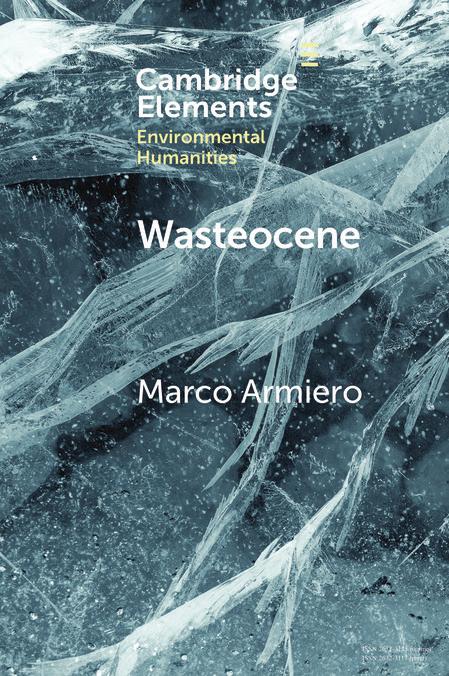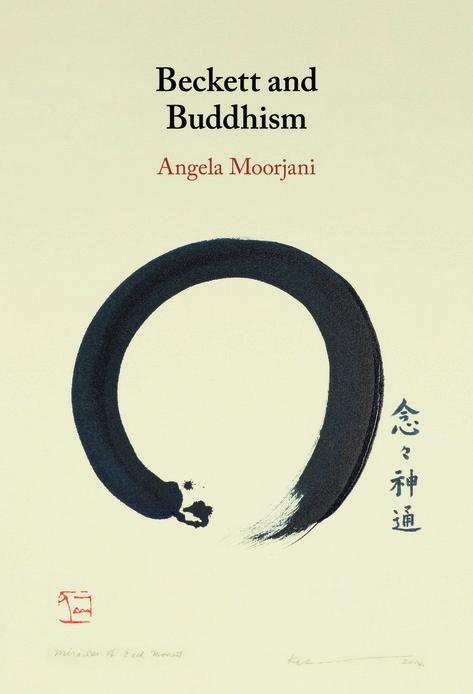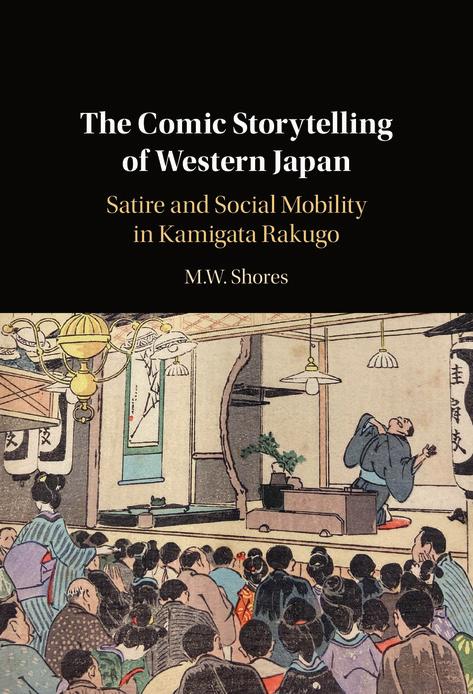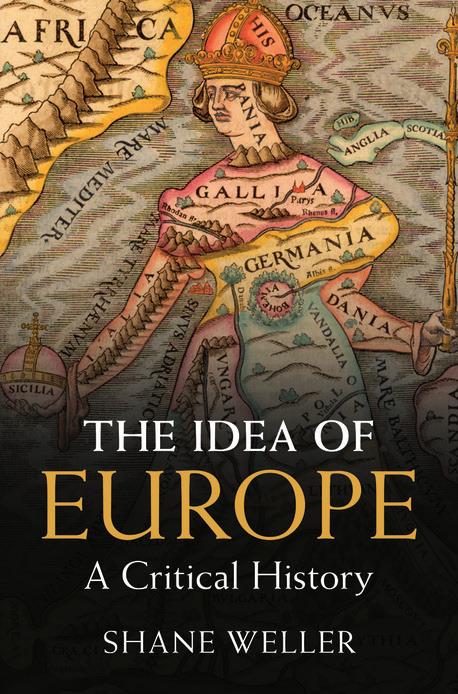
5 minute read
Literature
Wasteocene
Stories from the Global Dump
Marco Armiero
KTH Royal Institute of Technology, Stockholm & Institute for Studies on the Mediterranean CNR, Italy
Description
Humans may live in the Anthropocene, but this does not affect all in the same way. How would the Anthropocene look if, instead of searching its traces in the geosphere, researchers would look for them in the organosphere, in the ecologies of humans in their entanglements with the environment? Looking at this embodied stratigraphy of power and toxicity, more than the Anthropocene, we will discover the Wasteocene. The imposition of wasting relationships on subaltern human and more-than-human communities implies the construction of toxic ecologies made of contaminating substances and narratives. While offi cial accounts have systematically erased any trace of those wasting relationships, another kind of narrative has been written in fl esh, blood, and cells. Traveling between Naples (Italy) and Agbogbloshie (Ghana), science fi ction and epidemic outbreaks, this Element will take the readers into the bowels of the Wasteocene, but it will also indicate the commoning practices which are dismantling it.
Contents
1. Introduction; 2. From the Anthropocene to the Wasteocene; 3. Wasteocene Stories; 4. The Wasteocene at the microscope; 5. Sabotaging the Wasteocene; 6. Conclusion.
Additional Information
Level: Academic researchers, graduate students Series: Elements in Environmental Humanities
May 2021 229 x 152 mm c.75pp 978-1-108-82674-7 Paperback £15.00 / US$20.00
Italian rights sold.

Beckett and Buddhism
Angela Moorjani
University of Maryland, Baltimore County
Description
Beckett and Buddhism undertakes a twenty-first-century reassessment of the Buddhist resonances in Samuel Beckett’s writing. These reverberations, as Angela Moorjani demonstrates, originated in his early reading of Schopenhauer. Drawing on letters and archives along with recent studies of Buddhist thought and Schopenhauer’s knowledge of it, the book charts the Buddhist concepts circling through Beckett’s visions of the ‘human predicament’ in a blend of tears and laughter. Moorjani offers an in-depth elucidation of texts that are shown to intersect with the negative and paradoxical path of the Buddha, which she sets in dialogue with Western thinking. She brings further perspectives from cognitive philosophy and science to bear on creative emptiness, the illusory ‘I’, and Beckett’s probing of the writing process. Readers will benefit from this far-reaching study of one of the most acclaimed writers of the twentieth century who explored uncharted topologies in his fiction, theatre, and poetry.
Key Features
• Reassesses the role of Schopenhauer’s transmission of Eastern thought to the West and its extraordinary influence on modernist writing, art, and philosophical and psychoanalytic thinking in the first part of the 20th century • Provides incisive new readings of Beckett’s texts – prose fiction, drama, poems, and letters – from the late 1930s to the 1980s, based on the Buddhist echoes uncovered in his writings and their intersection with Western thought • Introduces philosophical and religious concepts – both Eastern and Western – in clear and comprehensible terms.

Contents
Introduction: Buddhism, Schopenhauer, Beckett: Influence Affinity, Relay?; 1. Schopenhauer’s Buddhism Revisited: Recent Archival Evidence; 2. East-West Dialogue via Schopenhauer; 3. Buddhist and Mystic Threads in the Early Fiction; 4. Beckett’s Paradoxical Logic through Buddhist and Western Lenses; 5. The Coincidence of Contraries and Noh Drama; 6. The No-Self Staged and Voices from Elsewhere; 7. Rebirth and the Buddhist Unborn in the Fiction and Drama; 8. Dreaming ‘all away’ in the Final Texts.
Additional Information
Level: Graduate students, academic researchers
July 2021 229 x 152 mm c.260pp 978-1-316-51969-1 Hardback £75.00 / US$99.99
The Comic Storytelling of Western Japan
Satire and Social Mobility in Kamigata Rakugo
M. W. Shores
University of Sydney
Description
Rakugo, a popular form of comic storytelling, has played a major role in Japanese culture and society. Developed during the Edo (1600–1868) and Meiji (1868–1912) periods, it is still popular today, with many contemporary Japanese comedians having originally trained as rakugo artists. Rakugo is divided into two distinct strands, the Tokyo tradition and the Osaka tradition, with the latter having previously been largely overlooked. This pioneering study of the Kamigata (Osaka) rakugo tradition presents the first complete English translation of five classic rakugo stories, and offers a history of comic storytelling in Kamigata (modern Kansai, Kinki) from the seventeenth century to the present day. Considering the art in terms of gender, literature, performance, and society, this volume grounds Kamigata rakugo in its distinct cultural context and sheds light on the ‘other’ rakugo for students and scholars of Japanese culture and history.

Key Features
• The first English monograph on Kamigata rakugo • First English translation of complete rakugo stories • Comprehensive study of Kamigata rakugo from the seventeenth century to the present day.
Contents
Author’s Preface: COVID-19 and Tenugui Face Masks; Introduction; Part I. 1. Kamigata, Osaka; 2. The History of Kamigata Rakugo; 3. What Constitutes a Kamigata Rakugo Story?; 4. Geidan: An Interview with Hayashiya Somemaru IV (1949–); 5. Conclusion; Part II.; 6. Five Kamigata Rakugo Classics.
Additional Information
Level: Academic researchers, graduate students
August 2021 229 x 152 mm c.270pp 978-1-108-83150-5 Hardback £75.00 / US$99.99
The Idea of Europe
A Critical History Shane Weller
University of Kent, Canterbury
Description
There is an increasingly widespread sense that Europe is in crisis. Notions of a shared European identity and a common European culture appear to be losing their purchase. This crisis is often seen as a conflict between a cosmopolitan and a nationalist idea of Europe. The reality is, however, considerably more complex, as the long history of the idea of Europe reveals. In The Idea of Europe: A Critical History, Shane Weller explores that history from its origins in classical antiquity to the present day. Drawing on a wide range of sources, he demonstrates that, all too often, seemingly progressive ideas of Europe have been shaped by Eurocentric, culturally supremacist, and even racist assumptions. Seeking to break with this troubling pattern, Weller calls for an idea of Europe shaped by a spirit of self-critique and by an openness to those cultures that have for so long been dismissed as non-European.

Key Features
• Charts the history of the idea of Europe from its origins in classical antiquity through to the present day, with detailed analyses of how Europe was conceived in the Enlightenment, the Romantic period, the later nineteenth-century, the interwar years, and the post-war world • Reveals the extent to which the discourse on the idea of Europe has been shaped by profoundly Eurocentric, Euro-supremacist, and Euro-universalist tendencies, and has borne some striking similarities to nationalist discourses • Advocates some of the core values traditionally associated with European culture (including democracy, justice, tolerance, and secularism), while arguing that these values need to be complemented by a spirit of self-critique and humility
Contents
1. Myths of Europa: from Classical Antiquity to the Enlightenment; 2. A Great Republic of Cultivated Minds: 1712–1815; 3. Nationalism and Universalism: 1815–1848; 4. The Russia Question; 5. Homo Europaeus:1848–1918; 6. The European Spirit: 1918–1933; 7. A New European Order: 1933–1945; 8. Unity in Diversity: 1945–1989; 9. Other Europes; 10. Europe Against Itself: 1989 to the Present Day.
Additional Information
Level: Academic researchers, graduate students
June 2021 228 x 152 mm 362pp 978-1-108-47810-6 Hardback £29.99 / US$39.99










